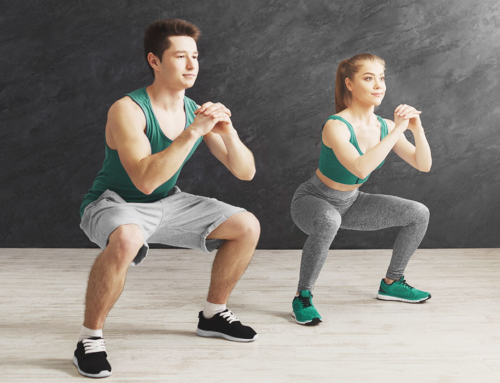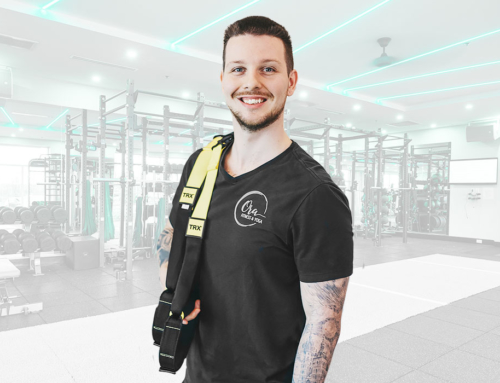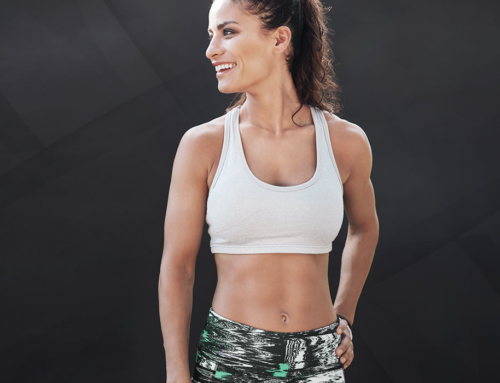Shredded abs, strong, sexy legs, lean, vibrant, and flawless health. That’s the image the fitness industry is selling. But have you ever wondered what it costs to achieve that “look”? Ever wonder what you have to give up?
Now don’t get me wrong, there are real trade-offs as you attempt to lose fat and improve your health. Let’s talk about what they are. So you can consider how to get the body you want while living the life you enjoy. Let me tell you a story of two past clients of mine.
The Story Of Billy
Not long ago, one of my clients, we’ll call him Billy Bob, came to me with a question. Now that he’d lost thirty pounds and going from 22% body fat to 15%, he could finally do chores around the house without being dead tired by the end of the day. He could genuinely enjoy weekend hikes with friends. He could wear clothes he used to be able to fit into but had long given up as hopeless.
But what next? Billy Bob wanted six-pack abs.
“Oh, I don’t have to look like a cover model,” he told me. “It’s just that I’m really close to looking… awesome.” Billy Bob figured that with just a little extra work, and a little more time, the abs would start popping and his physique would be “finished”.
Meanwhile, another client, let’s call her Sally Sue, had the opposite concern. She just wanted to lose a little weight, and get a bit more fit. But she worried that to do so, she’d have to give up everything, and make massive changes. Changes that probably included 5am workouts, kale shakes, lemon juice cleanses, and 1000 sit ups a day… forever.
“No way,” thought Sally Sue. “That’s too much work.” Two common misperceptions I see in these two stories:
Misperception #1
With just a few small, manageable, hopefully, subtle changes to one’s diet and exercise routine, you too can have shredded abs, big biceps, and tight glutes, just like a cover model.
Misperception #2
“Getting into shape” or “losing weight” involves painful, intolerable sacrifice, restriction, and deprivation.
Of course, neither of these are true. Here’s the realities of both:
Reality #1
The process that helps you lose “the first 10 pounds” isn’t the same one that’ll help you lose “the last 10 pounds”. It usually takes a lot more work as you get leaner.
Reality #2
If you do aspire to get “fitness model” or “elite athlete” lean, you might be surprised. Many images online and in magazines are photoshopped for effect. Bodybuilders only look like that for competition, and achieving that look comes at a high cost; one most people aren’t willing to pay.
Looking at the Numbers
However, if you’re okay not being on the next magazine cover and aspire to be “lean and healthy” even small adjustments can, over time add up to noticeable improvements. Sometimes these improvements can change, perhaps also save, lives.
I think it’s necessary to weigh the pros and cons so that you can make informed decisions about your body and your life. I like to categorize body leanness in percentages to show what it takes. Let’s start with the benefits and tradeoffs with each fitness level.
Level 1: Body Fat Percentage: 20%+ For Men, 30%+ for Women
Pros
- Does not require much work
- Easy to maintain
Cons
- Low energy
- Poor Health
- May need some medication
Level 2: Body Fat Percentage: 15-20% For Men, 25-30% for Women
Pros
- Improved overall health
- Better sleep quality
- Exercise is more enjoyable
- Look better in clothes
Cons
- Requires some thought and planning
Level 3: Body Fat Percentage: 13-15% For Men, 23-25% for Women
Pros
- Reasonably easy to maintain with some adjustments
- Would finally see the elimination of medication
Cons
- Requires some planning
- Minor social changes, such as less time at bars and restaurants with friends
- Requires better sleep hygiene
- Requires better stress management techniques
Level 4: Body Fat Percentage: 10-12% For Men, 20-22% for Women
Pros
- Fitter appearance
- More energy
- Improved overall health
- Fewer food cravings
- Easy to achieve as exercise and eating becomes a habit
Cons
- More planning and more attention to diet
- More time and commitment for exercise and diet
- Sleep has to take priority
Level 5: Body Fat Percentage: 6-9% For Men, 16-19% for Women
Pros
- Really lean, may even have some abs popping out
- Overall health is optimal
- Minimal cravings
Cons
- Will struggle in social settings because of food
- May not have enough time for social outings as most time will be spent at the gym and in the kitchen
- May have to give up other hobbies in place for fitness and health
Level 6: Body Fat Percentage: Less than 6% For Men, Less than 16% for Women
Pros
- Finally getting “the perfect body”
Cons
- No more social outings due to diet
- Have to say “no” to hanging out with friends and family who don’t follow the same lifestyle
- Have to measure, weigh, and track every single calorie and macronutrient daily
- Nutrition becomes number 1 time consumer
- Exercise becomes number 2 time consumer
- All other goals or achievements will need to be placed on the back burner
Even if you think you’d like that six-pack, it might turn out that you want something else a little bit more, and I wouldn’t blame you.
Here are the two basic principles I teach my clients:
- If you want to make further changes to your body, you’ll need to make further changes to your behaviours.
- The leaner you want to get, the more of your behaviours you’ll have to change.
What you decide to change, and how much you decide to change it, is up to you. What’s most important here is that you understand what it takes to do what you want, or possibly think you want.
What’s a healthy level of body fat anyway?
First, for the sake of context, let’s take a look at some numbers. Data tell us that most men can be healthy somewhere between 11-22% body fat. For women, it’s between 22-33%.
Right now in North America, the average man is about 28% fat, and the average woman is 40% fat. In other words, the average adult in North America is carrying a lot of excess body fat. The good news is that it’s not that hard to go from excess body fat to the higher end of what is considered “normal”.
You can do it with a few relatively small, easy-to-implement changes.
What’s the next step?
Well, if you’re a man who wants to reduce body fat from 18% to 14%, or a woman who wants to go from 28% to 24%, you’ll need to make some more significant changes. You’ll need to invest more time, energy, and effort. You’ll need to plan more, and you’ll also have to make some trade-offs.
If you want to go from “lean” to “leaner” it becomes more time-consuming. If you’re a man and you want to go from say 14% to 10% body fat, or you’re a woman, and you want to go from 24% body fat to 20%, it’s all a question of doing more… and less.
You’ll probably need to do more of:
- Exercising and daily-life movement, and perhaps make that exercise more intense
- Eat more vegetables and lean protein
- Choose more whole foods
- Do more meal planning
- Get serious about rest and recovery
- Learning your physical hunger and fullness cues
You’ll probably need to do less of:
- Drinking alcohol and other high-calorie beverages
- Eating processed foods
- Eating when you’re not physically hungry (snacking, etc)
You’ll need to make these small changes consistently, over a long period of time. The most important thing is that you realize: To change you have to change.
What it takes to get “super-lean?”
At the next stage, going from athletically lean to bodybuilder lean — the tradeoffs get even more precise and challenging. Here’s something that you may not realize: Elite bodybuilders getting ready for a contest and models getting ready for a shoot are basically in a slow starvation process.
Adhering to a rigorous and precise regimen of eating and training is the only way they can drop their body fat to extremely low levels. Men can get to body fat levels under 6% with this process, and females can get to under 16%. But this process is not for the faint of heart.
It goes against biological cues. It requires exercising when exhausted. It demands to ignore their desire for food in the face of powerful hunger cues. It involves intense focus and dedication. It often distracts from other areas of life that these athletes might enjoy and value.
Imagine all the practical things that are involved in stringent dieting and training. You have to make your own food and measure every meal down to the last gram, and that food is generally very plain — lean protein, steamed vegetables, plain potatoes or rice, etc. You have to carry that food with you so you can eat at a precise time, and you cannot eat in restaurants. You have to do a specific workout on a given day, exactly as specified. There are no sick days, and no slacking, you’ll probably be training 2 or 3 times per day. You have to sleep and recover precisely, meaning no parties or staying up late. You can’t think straight because you’re always hungry and tired.
Your whole life revolves around making food, dieting, training, and recovery protocols. Did I mention you’re slowly starving? So forget having a sex life, social life, parenthood, school, and probably a regular job.
Is that level of leanness worth it? Having a six-pack doesn’t automatically make you healthy. In fact, getting too lean can be actively unhealthy. You might end up with amenorrhea, low libido, disordered eating, brittle bones, social isolation, and a host of other problems.
Figure out your goals and priorities. If you don’t know what your priorities are, now’s a great time to explore that. Decide what you’re willing to do right now to serve those goals and priorities. Why? Decide how often, and how consistently, and how precisely, you’re willing to do those things.
Here’s what to do next:
Take the long view
Whatever change you want to make, remember: It will take time. Eating one big, calorie-dense meal won’t make you wake up overweight. Fasting for 24 hours won’t give you six-pack abs. A simple plan followed consistently is better than an elaborate plan followed intermittently.
Review what’s involved
To reduce your body fat from unhealthy to healthy levels
You only need to make a few changes and follow them about 80% of the time.
To go from normal to reasonably lean:
You need a few more changes and a bit more consistency. Now you might need to eat protein and veggies at every meal, and get 7+ hours of sleep 85% of the time.
To go from lean to very lean:
You’ll have to put in more time and more effort. Plus, you’ll need to follow your plan even more consistently — with almost obsessive accuracy. This means adding a few more habits, such as monitoring fat and carbohydrate intake, and exercising at least 5 hours per week 95% of the time.
For instance, if you eat four meals per day, in any given month you’ll need to ensure that 114 of your 120 precisely calibrated meals are perfectly executed, to achieve your desired level of leanness.
That’s a serious commitment right there.
Get clarity on what YOU want
Review the “getting clear, getting real” list. What matters to YOU? What are YOU willing to do… or not? Why?
There’s no right answer. What’s most important is that you understand what it takes to get a particular outcome.
YOU have the power to choose. Healthy, athletically lean, or super lean: It all depends on your priorities and goals. Now you can make the decisions — and get the body you need, while still living the life you want.









Leave A Comment